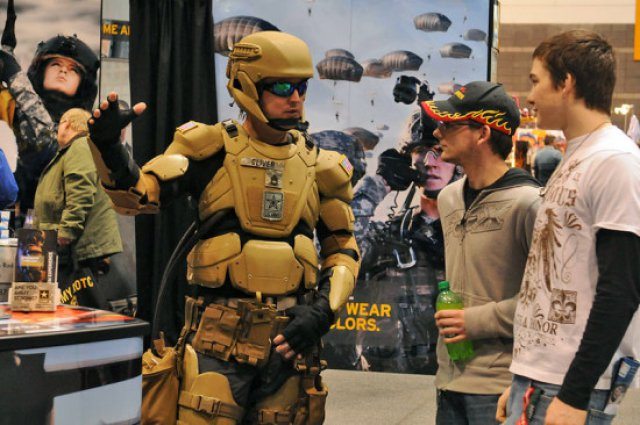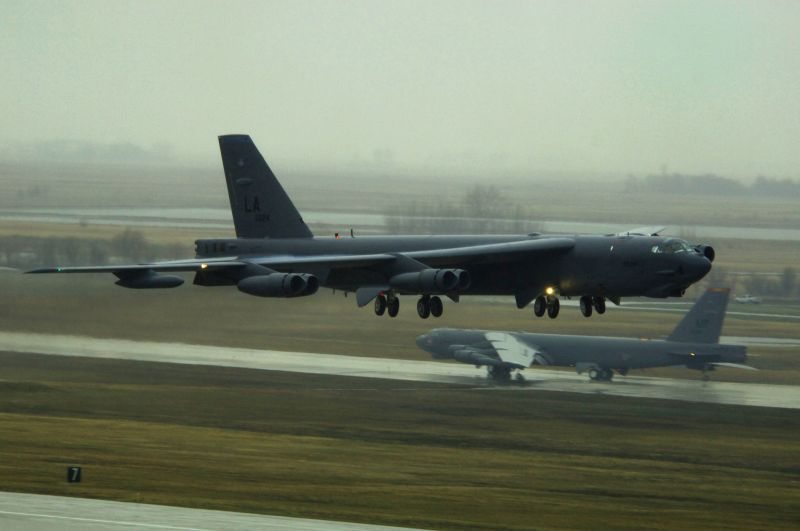Research, development and acquisition investments have declined 37 percent since the fiscal year 2012 budget planning cycle, said the G-8.
Historically, the research, development and acquisition, or RDA, account averaged about 22 percent of the Army’s obligation authority. But for fiscal year 2015, the RDA account is at 17 percent or about $20 billion, Lt. Gen. James O. Barclay III told members of the House Armed Services Subcommittee on Tactical Air and Land Forces, today.
Yet, despite slashing RDA, “it’s essential that the Army ensure every Soldier deployed is equipped to achieve decisive overmatch,” he said, outlining the steps being taken.
To achieve decisive overmatch without much money, the Army is using incremental improvements to modernize critical systems, he explained. And new systems will be built “only by exception.”
Additionally, he said the Army is divesting older systems like the Kiowa helicopter and “niche capabilities to decrease sustainment costs and generate more resources to invest in modernization and readiness.”
In the area of science and technology, the Army is funding research on key areas that commercial corporations are ignoring, while reducing funding where private-sector S&T gains are being seen.
And finally, to maximize every dollar, the Army is procuring smaller quantities of systems and components.
Barclay admitted to lawmakers that the Army “is taking risks in its near-term modernization program,” as it tries to balance that with readiness and modernization.
INDUSTRIAL BASE
Lawmakers expressed their concern that the organic industrial base would stagnate and lose workers as a result of the Army procuring smaller quantities of materiel, divesting systems and not buying new systems.
Addressing their concerns, Maj. Gen. Michael E. Williamson, military deputy to the assistant secretary of the Army for Acquisition, Logistics and Technology, enumerated steps the Army is taking as lawmakers tighten the purse strings.
Foreign military sales could keep some of the assembly lines running and talented professionals employed, he said, but that will only go so far.
“Not all sales come through,” Williamson said, adding foreign sales can at times be unpredictable.
Acquisition reform is another area where improvements could be made, he said, pointing out that there are too many statutes and rules of where money can or cannot go and that adds to overhead costs associated with running facilities within the industrial base.
Army Materiel Command and the Office of the Assistant Secretary of the Army for Acquisition, Logistics and Technology, are now locating greater efficiencies, identifying “cost drivers,” determining overhead and looking for opportunities, Williamson said.
Another way to save costs, while procuring in less quantities, he said, would be to team up with other agencies, not just sister services. For example, he said the Army might look at partnering with police and other security forces to procure body armor. Buying in quantity would drive down costs of the research as well as the procurement. Also, with more money in play, competition among vendors would be more likely.
Something else that could benefit the Army as well as the industrial base, he said would be using more multi-year programs. Depending on how the contracts are worded, multi-year might allow savings by creating leverage in negotiations.
Multi-year programs, of course, would need a predictable funding stream, which is something that hasn’t been too predictable in recent years.
WEAPONS SYSTEMS
Barclay said the Army remains committed to continued funding of its mission-critical systems such as the Paladin Integrated Management System, double-V-hull Strykers, Warfighter Information Network-Tactical, and the Joint Light Tactical Vehicle.
He added that despite “a rocky start, [the Paladin Integrated Management System] is performing very well now.”
If WIN-T is so important, why has the Army lowered funding for it and the Joint Tactical Radio System’s Handheld, Manpack and Small Form Fit, asked a lawmaker.
Williamson replied that both WIN-T and HMS radio are critical to the warfighter but because of the declining budget, the Army has accepted some risk, “but not excessive risk.”
Lower funding of those systems, he said, will mean fewer coming off the production lines, but those that do will be fielded first to the “most critical units” that are or could deploy.
Besides slowing production, he said some capability in the networks are being delayed, such as the WIN-T Increment 3 package which would have had enhanced bandwidth capability.
With respect to the networks, Barclay added that low funding is pushing the dates of procurements and deliveries to the right, but the Army is “not backing away from its commitment to the network and its overall importance.”
One lawmaker commented that with the removal of the Apache helicopters from the National Guard, the Reserve Component is losing its teeth.
Barclay replied that active-component Apaches will still be “aligned with the National Guard” and its combat aviation brigades.
Why would the Guard’s combat aviation brigades be called “combat” aviation brigades if the Apaches are being removed, the lawmaker pressed?
Black Hawk and Chinook helicopters, which the Guard has in its fleet, can and do perform combat missions, Barclay replied, adding that the decision to divest all of its Kiowa helicopters and remove Apaches from the Guard was done in consultation and after much analysis and that it’s the “best we could do given the dollar amount given.”











